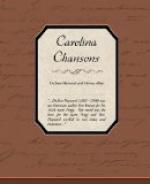There was also a story told by a dying sailor who confessed that he had seen the crew of such a boat walk the plank, and that among them was a beautiful woman who walked into the sea with a Bible or prayer-book in her hand.
The painting is in the possession of the Burr-Alston connection, and is thought by them, on account of its striking family resemblance, to be a picture of Theodosia Burr. The painting story has often been scouted, but there is too much circumstantial evidence to ignore it in treating the legend.
NOTE TO “THE LAST CREW”
The “Fish-Boat” of the Confederate Navy, which exhaustive research indicates to have been the first submarine vessel to sink an enemy ship in time of war, was designed by Horace L. Hundley in 1863. This boat was twenty feet long, three and one-half feet wide, and five feet deep. Her motive power consisted of eight men whose duty it was to turn the crank of the propeller shaft by hand until the target had been reached. When this primitive craft was closed for diving there was only sufficient air to support life for half an hour. Since the torpedo was attached to the boat itself there was no chance of escape. The only hope was to reach and destroy the enemy vessel before the crew were suffocated or drowned.
Five successive volunteer crews died without reaching their objectives. But the sixth crew was successful in sinking the Federal blockading ship “Housatonic,” their own craft being caught and crushed beneath the foundering vessel. These crews went to certain death in the night time, in such secrecy that it was often months before their own families knew the names of the men. And now, with the lapse of scarcely more than half a century, it has been possible to find the names of only sixteen of those who paid the price.
Because no nation of any time can point to a more inspiring example of self-sacrifice, and because now, in a country reunited and indissoluble, the traditions of both the North and the South are a common, glorious heritage, the poem, which presents the final episode in the drama, is written as a memorial to all who gave their lives in the venture.
D.H.
NOTE ON POE
TO ACCOMPANY “EDGAR ALLAN POE” AND “ALCHEMY”
In May, 1828, Poe enlisted in the army under the name of Edgar A. Perry, and was assigned to Battery “H” of the First Artillery at Fort Independence. In October his battery was ordered to Fort Moultrie, Charleston, S.C. Poe spent a whole year on Sullivan’s Island. Professor C. Alphonso Smith, the well-known Poe authority, says, “So far as I know, this was the only tropical background that Poe had ever seen.” That the susceptible nature of the young poet was vastly impressed by the weirdness and melancholy scenery of the Carolina coast country, there can be very little doubt. The dank tarns and funereal woodlands of his landscapes, or at least the strong suggestion of them, may all be found here, and the scene of The Goldbug is definitely laid on Sullivan’s Island. Here are dim family vaults, and tracts of country in which the House of Usher might well stand.




